 W
WThe presidency of George W. Bush began at noon EST on January 20, 2001, when George W. Bush was inaugurated as the 43rd president of the United States, and ended on January 20, 2009. Bush, a Republican, took office following a very close victory over Democratic incumbent vice president Al Gore in the 2000 presidential election. Four years later, in the 2004 election, he defeated Democrat John Kerry to win re-election. Bush, the 43rd president, is the eldest son of the 41st president, George H. W. Bush. He was succeeded by Democrat Barack Obama, who won the 2008 presidential election.
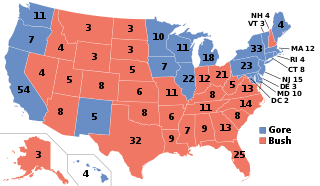 W
WThe 2000 United States presidential election was the 54th quadrennial presidential election, held on Tuesday, November 7, 2000. Republican candidate George W. Bush, the governor of Texas and eldest son of the 41st president, George H. W. Bush, won the election, defeating Democratic nominee Al Gore, the incumbent vice president. It was the fourth of five presidential elections in which the winning candidate lost the popular vote and is considered one of the closest elections in US history.
 W
WFrom the mid-1980s to September 2003, the inflation-adjusted price of a barrel of crude oil on NYMEX was generally under US$25/barrel. During 2003, the price rose above $30, reached $60 by 11 August 2005, and peaked at $147.30 in July 2008. Commentators attributed these price increases to many factors, including Middle East tension, soaring demand from China, the falling value of the U.S. dollar, reports showing a decline in petroleum reserves, worries over peak oil, and financial speculation.
 W
WThe 2002 State of the Union Address was given by the 43rd President of the United States, George W. Bush, on Tuesday, January 29, 2002, at 9 p.m. EST, in the chamber of the United States House of Representatives to the 107th United States Congress. It was Bush's first State of the Union Address and his third speech to a joint session of the United States Congress. Presiding over this joint session was the House Speaker, Dennis Hastert, accompanied by Dick Cheney, the Vice President of the United States.
 W
WThe 2003 invasion of Iraq was the first stage of the Iraq War. The invasion phase began on 19 March 2003 (air) and 20 March 2003 (ground) and lasted just over one month, including 26 days of major combat operations, in which a combined force of troops from the United States, the United Kingdom, Australia and Poland invaded Iraq. This early stage of the war formally ended on 1 May 2003 when U.S. President George W. Bush declared the "end of major combat operations", after which the Coalition Provisional Authority (CPA) was established as the first of several successive transitional governments leading up to the first Iraqi parliamentary election in January 2005. U.S. military forces later remained in Iraq until the withdrawal in 2011.
 W
WThe 2003 State of the Union Address was given by the 43rd President of the United States, George W. Bush, on Tuesday, January 28, 2003, at 9 p.m. EST, in the chamber of the United States House of Representatives to the 108th United States Congress. It was Bush's second State of the Union Address and his third speech to a joint session of the United States Congress. Presiding over this joint session was the House Speaker, Dennis Hastert, accompanied by Dick Cheney, the Vice President of the United States.
 W
WThe 2004 State of the Union Address was given by the 43rd President of the United States, George W. Bush, on Tuesday, January 20, 2004, at 9 p.m. EST, in the chamber of the United States House of Representatives to the 108th United States Congress. It was Bush's third State of the Union Address and his fourth speech to a joint session of the United States Congress. Presiding over this joint session was the House Speaker, Dennis Hastert, accompanied by Dick Cheney, the Vice President of the United States.
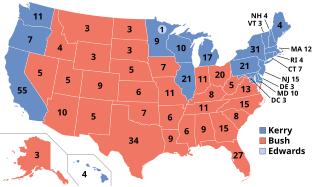 W
WThe 2004 United States presidential election was the 55th quadrennial presidential election, held on Tuesday, November 2, 2004. The incumbent Republican President George W. Bush and his running mate Vice President Dick Cheney were elected to a second term, defeating the Democratic ticket of John Kerry, a United States Senator from Massachusetts and his running mate John Edwards, a United States Senator from North Carolina.
 W
WThe 2005 State of the Union Address was given by the 43rd President of the United States, George W. Bush, on Wednesday, February 2, 2005, at 9 p.m. EST, in the chamber of the United States House of Representatives to the 109th United States Congress. It was Bush's fourth State of the Union Address and his fifth speech to a joint session of the United States Congress. Presiding over this joint session was the House Speaker, Dennis Hastert, accompanied by Dick Cheney, the Vice President of the United States.
 W
WThe 2006 State of the Union Address was given by the 43rd President of the United States, George W. Bush, on Tuesday, January 31, 2006, at 9 p.m. EST, in the chamber of the United States House of Representatives to the 109th United States Congress. It was Bush's fifth State of the Union Address and his sixth speech to a joint session of the United States Congress. Presiding over this joint session was the House Speaker, Dennis Hastert, accompanied by Dick Cheney, the Vice President of the United States.
 W
WThe 2007 State of the Union Address was given by the 43rd President of the United States, George W. Bush, on Tuesday, January 23, 2007, at 9 p.m. EST, in the chamber of the United States House of Representatives to the 110th United States Congress. It was Bush's sixth State of the Union Address and his seventh speech to a joint session of the United States Congress. Presiding over this joint session was the House Speaker, Nancy Pelosi, accompanied by Dick Cheney, the Vice President of the United States.
 W
WThe 2008 State of the Union Address was given by the 43rd President of the United States, George W. Bush, on Monday, January 28, 2008, at 9 p.m. EST, in the chamber of the United States House of Representatives to the 110th United States Congress. It was Bush's seventh and final State of the Union Address and his eighth and final speech to a joint session of the United States Congress. Presiding over this joint session was the House Speaker, Nancy Pelosi, accompanied by Dick Cheney, the Vice President of the United States.
 W
WOn October 31, 2005, President George W. Bush nominated Samuel Alito for Associate Justice of the Supreme Court of the United States to replace retiring Justice Sandra Day O'Connor. Alito's nomination was confirmed by a 58–42 vote of the United States Senate on January 31, 2006.
 W
WThe American Jobs Creation Act of 2004 was a federal tax act that repealed the export tax incentive (ETI), which had been declared illegal by the World Trade Organization several times and sparked retaliatory tariffs by the European Union. It also contained numerous tax credits for agricultural and business institutions as well as the repeal of excise taxes on both fuel and alcohol and the creation of tax credits for biofuels.
 W
WThe Bush Doctrine refers to multiple interrelated foreign policy principles of the 43rd President of the United States, George W. Bush. These principles include unilateralism and the use of preemptive war.
 W
WOn December 14, 2008, Iraqi journalist Muntadhar al-Zaidi threw both of his shoes at United States President George W. Bush during an Iraqi press conference. Bush quickly ducked, avoiding being hit by either of the shoes. The second shoe hit the US flag, and Al-Zaidi was subsequently grabbed, kicked, and hurried out of the room by guards. Effigies of many United States Presidents had long appeared with shoes on them all over the Middle East, but it was not until this event that shoeing had received widespread notability. Since then, there have been many other shoeing incidents on an international scale. Al-Zaidi received a three-year prison sentence, which was reduced to two years. On September 15, 2009, after nine months of incarceration, he was released early because he had no prior criminal record.
 W
WThe domestic policy of the George W. Bush Administration was the domestic policy of the United States from 2001 to 2009 while George W. Bush was president. Bush's main domestic policy advisors include Chairman of the Council of Economic Affairs Edward Lazear, Rob Portman, director of the Office of Management and Budget; U.S. Secretary of Labor Elaine Chao Vice President Dick Cheney; U.S. Secretary of the Treasury Henry Paulson; U.S. Secretary of Commerce Carlos Gutierrez; U.S. Secretary of Health and Human Services Michael O. Leavitt and Allan Hubbard, director of the National Economic Council.
 W
WDuty: Memoirs of a Secretary at War is a nonfiction book written by Robert M. Gates, a former U.S. Secretary of Defense. It was published in January 2014 by Alfred A. Knopf. The time period is from 2006 to 2011, and includes the George W. Bush administration (2006–2009), the Obama administration (2009–2011), the Afghan war, and the Iraq War.
 W
WThe financial crisis of 2007–2008, also known as the global financial crisis (GFC), was a severe worldwide financial crisis. Excessive risk-taking by banks combined with the bursting of the United States housing bubble caused the values of securities tied to U.S. real estate to plummet, damaging financial institutions globally, culminating with the bankruptcy of Lehman Brothers on September 15, 2008, and an international banking crisis. The crisis sparked the Great Recession, which, at the time, was the most severe global recession since the Great Depression. It was also followed by the European debt crisis, which began with a deficit in Greece in late 2009, and the 2008–2011 Icelandic financial crisis, which involved the bank failure of all three of the major banks in Iceland and, relative to the size of its economy, was the largest economic collapse suffered by any country in economic history.
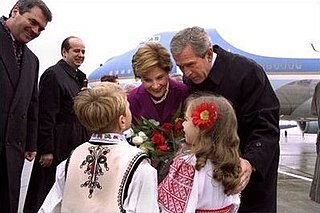 W
WThe foreign policy of the George W. Bush administration was the foreign policy of the United States from 2001 to 2009 under President George W. Bush. Bush's main foreign policy advisors were Secretaries of State Colin Powell and Condoleezza Rice, National Security Advisor Stephen Hadley, and Vice President Dick Cheney.
 W
WThe first inauguration of George W. Bush as the 43rd President of the United States took place on Saturday, January 20, 2001, at the West Front of the United States Capitol in Washington, D.C. This was the 54th inauguration and marked the commencement of the first term of George W. Bush as President and Dick Cheney as Vice President. Chief Justice William Rehnquist administered the presidential oath of office at 12:01 p.m., after he administered the vice-presidential oath of office as well. An estimated 300,000 people attended the swearing-in ceremony. This was the first presidential inauguration to take place in the 21st century, and the first in the 3rd millennium.
 W
WThe second inauguration of George W. Bush as President of the United States took place on Thursday, January 20, 2005, at the West Front of the United States Capitol in Washington, D.C. This was the 55th inauguration and marked the beginning of the second and final term of George W. Bush as President and Dick Cheney as Vice President. The ailing Chief Justice William Rehnquist administered the presidential oath of office for the last time before his death on September 3 that year. Attendance at the inauguration has been reported as being around 100,000, 300,000, or 400,000.
 W
WThe 123 Agreement signed between the United States of America and the Republic of India is known as the U.S.–India Civil Nuclear Agreement or Indo-US nuclear deal. The framework for this agreement was a July 18, 2005, joint statement by then Indian Prime Minister Manmohan Singh and then U.S. President George W. Bush, under which India agreed to separate its civil and military nuclear facilities and to place all its civil nuclear facilities under International Atomic Energy Agency (IAEA) safeguards and, in exchange, the United States agreed to work toward full civil nuclear cooperation with India. This U.S.-India deal took more than three years to come to fruition as it had to go through several complex stages, including amendment of U.S. domestic law, especially the Atomic Energy Act of 1954, a civil-military nuclear Separation Plan in India, an India-IAEA safeguards (inspections) agreement and the grant of an exemption for India by the Nuclear Suppliers Group, an export-control cartel that had been formed mainly in response to India's first nuclear test in 1974. In its final shape, the deal places under permanent safeguards those nuclear facilities that India has identified as "civil" and permits broad civil nuclear cooperation, while excluding the transfer of "sensitive" equipment and technologies, including civil enrichment and reprocessing items even under IAEA safeguards. On August 18, 2008 the IAEA Board of Governors approved, and on February 2, 2009, India signed an India-specific safeguards agreement with the IAEA. After India brought this agreement into force, inspections began in a phased manner on the 35 civilian nuclear installations India has identified in its Separation Plan. The deal is seen as a watershed in U.S.-India relations and introduces a new aspect to international nonproliferation efforts. On August 1, 2008, the IAEA approved the safeguards agreement with India, after which the United States approached the Nuclear Suppliers Group (NSG) to grant a waiver to India to commence civilian nuclear trade. The 48-nation NSG granted the waiver to India on September 6, 2008 allowing it to access civilian nuclear technology and fuel from other countries. The implementation of this waiver made India the only known country with nuclear weapons which is not a party to the Non-Proliferation Treaty (NPT) but is still allowed to carry out nuclear commerce with the rest of the world.
 W
WFollowing is a list of all Article III United States federal judges appointed by President George W. Bush during his presidency, including a partial list of Judges appointed under Article I.
 W
WOn May 8, 2006, Iranian President Mahmoud Ahmadinejad sent a missive directly to then United States President George W. Bush that proposed "new ways" to end the dispute over the Islamic Republic's development of nuclear power.
 W
WThe Medicare Prescription Drug, Improvement, and Modernization Act, also called the Medicare Modernization Act or MMA, is a federal law of the United States, enacted in 2003. It produced the largest overhaul of Medicare in the public health program's 38-year history.
 W
WOn July 26, 2002, John Negroponte, the United States Ambassador to the United Nations, stated that the United States will oppose Security Council resolutions concerning the Israeli–Palestinian conflict that condemn Israel without also condemning terrorist groups. This became known as the Negroponte Doctrine, and has been viewed by officials in the United States as a counterweight to the frequent resolutions denouncing Israel that are passed by the UN General Assembly.
 W
WThe No Child Left Behind Act of 2001 (NCLB) was a U.S. Act of Congress that reauthorized the Elementary and Secondary Education Act; it included Title I provisions applying to disadvantaged students. It supported standards-based education reform based on the premise that setting high standards and establishing measurable goals could improve individual outcomes in education. The Act required states to develop assessments in basic skills. To receive federal school funding, states had to give these assessments to all students at select grade levels.
 W
WThe Postal Accountability and Enhancement Act (PAEA) is a United States federal statute enacted by the 109th United States Congress and signed into law by President George W. Bush on December 20, 2006.
 W
WThe President's Commission on Implementation of United States Space Exploration Policy was a Presidential Commission formed by United States President George W. Bush on January 27, 2004, through the Executive Order 13326. Its final report was submitted on June 4, 2004.
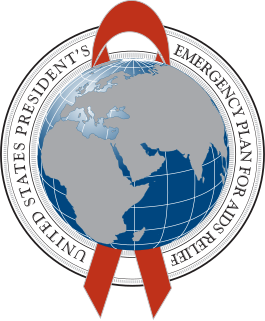 W
WThe President's Emergency Plan For AIDS Relief (PEPFAR) is a United States governmental initiative to address the global HIV/AIDS epidemic and help save the lives of those suffering from the disease. Launched by U.S. President George W. Bush in 2003, PEPFAR has provided more than $80 billion in cumulative funding for HIV/AIDS treatment, prevention, and research since its inception, making it the largest global health program focused on a single disease in history. PEPFAR is implemented by a combination of U.S. government agencies in over 50 countries and overseen by the Global AIDS Coordinator at the U.S. Department of State. It is widely credited with having helped save millions of lives, primarily in Sub-Saharan Africa. Latest results show PEPFAR has saved over 17 million lives.
 W
WReality-based community is a derisive term for people who base judgments on facts. It was first attributed to a senior official working for U.S. president George W. Bush by the reporter Ron Suskind in 2004. Many American liberals adopted the label for themselves, using it to portray themselves as adhering to facts in contradiction to conservatives presumably disregarding professional and scientific expertise.
 W
WOn September 5, 2005, President George W. Bush announced that he would nominate Judge John Roberts for the position of Chief Justice of the Supreme Court of the United States, to succeed William H. Rehnquist, who had died two days earlier. In July 2005, Roberts had been nominated to replace retiring Associate Justice Sandra Day O'Connor; however, following Rehnquist's death, that still-pending nomination was withdrawn.
 W
WThe September 11 attacks, often referred to as 9/11, were a series of four coordinated terrorist attacks by the Islamist terrorist group Al-Qaeda against the United States on the morning of Tuesday, September 11, 2001. The attacks resulted in 2,977 fatalities, over 25,000 injuries, and substantial long-term health consequences, in addition to at least $10 billion in infrastructure and property damage. It is the single deadliest terrorist attack in human history and the single deadliest incident for firefighters and law enforcement officers in the history of the United States, with 343 and 72 killed, respectively.
 W
WThe Slovakia Summit 2005 was a summit meeting between United States President George W. Bush and Russian President Vladimir Putin. It took place on February 24, 2005, in Bratislava, Slovakia. This marked the first occasion when a sitting President of the United States visited Slovakia since its independence in 1993. The previous "Bush-Putin summit" had taken place in Slovenia on 16 June 2001.
 W
WThe Slovenia Summit 2001 was a summit meeting between United States President George W. Bush and Russian President Vladimir Putin. It took place on June 16, 2001, on the Brdo pri Kranju estate in northern Slovenia. It was hosted by the then Prime Minister of Slovenia Janez Drnovšek and by the President of Slovenia Milan Kučan.
 W
WCondoleezza Rice served as United States Secretary of State under George W. Bush. She was preceded by Colin Powell and followed by Hillary Clinton. As secretary of state she traveled widely and initiated many diplomatic efforts on behalf of the Bush administration.
 W
WThe Treaty Between the United States of America and the Russian Federation on Strategic Offensive Reductions (SORT), also known as the Treaty of Moscow, was a strategic arms reduction treaty between the United States and Russia that was in force from June 2003 until February 2011 when it was superseded by the New START treaty. At the time, SORT was positioned as "represent[ing] an important element of the new strategic relationship" between the two countries with both parties agreeing to limit their nuclear arsenal to between 1,700 and 2,200 operationally deployed warheads each. It was signed in Moscow on 24 May 2002. After ratification by the U.S. Senate and the State Duma, SORT came into force on 1 June 2003. It would have expired on 31 December 2012 if not superseded by New START. Either party could have withdrawn from the treaty upon giving three months written notice to the other.
 W
WSpeculation abounded over potential nominations to the Supreme Court of the United States by President George W. Bush since before his presidency.
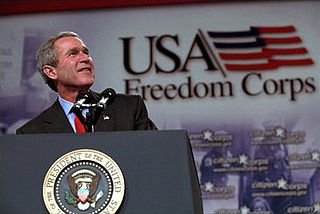 W
WUSA Freedom Corps was a White House office and fifth policy council within the Executive Office of the President of the United States under George W. Bush, who as President served as its chair. Bush announced its creation during his 2002 State of the Union Address, and the Corps was officially established the next day, describing itself as a "Coordinating Council... working to strengthen our culture of service and help find opportunities for every American to start volunteering."
 W
WThe Virginia Tech shooting was a school shooting that occurred on April 16, 2007, at two buildings, West Ambler Johnston Hall and Norris Hall, on the campus of the Virginia Polytechnic Institute and State University, in Blacksburg, Virginia. Seung-Hui Cho, an undergraduate student at the university and a U.S. resident of South Korean origin, shot and killed 32 people and wounded 17 others with two semi-automatic pistols. Six others were injured jumping out of windows to escape Cho. As police stormed Norris Hall, Cho committed suicide by shooting himself in the head. It is the deadliest school shooting in the history of the United States, and was also the deadliest mass shooting by a lone gunman in U.S. history until it was surpassed nine years later by the Orlando nightclub shooting.
 W
WThe White House Hanukkah Party is an annual reception held at the White House and hosted by the U.S. President and First Lady to recognize and celebrate the Jewish festival of Hanukkah. The tradition was established in 2001, during the administration of George W. Bush. The guest list includes hundreds of American Jewish politicians, organization heads, and school and yeshiva deans.
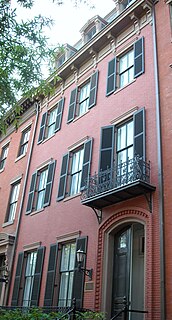 W
WThe White House Office of Faith-Based and Neighborhood Partnerships, formerly the White House Office of Faith-Based and Community Initiatives (OFBCI) is an office within the White House Office that is part of the Executive Office of the President of the United States.
 W
WBenson Kelley Whitney was the United States Ambassador to Norway from 2006 to 2009.